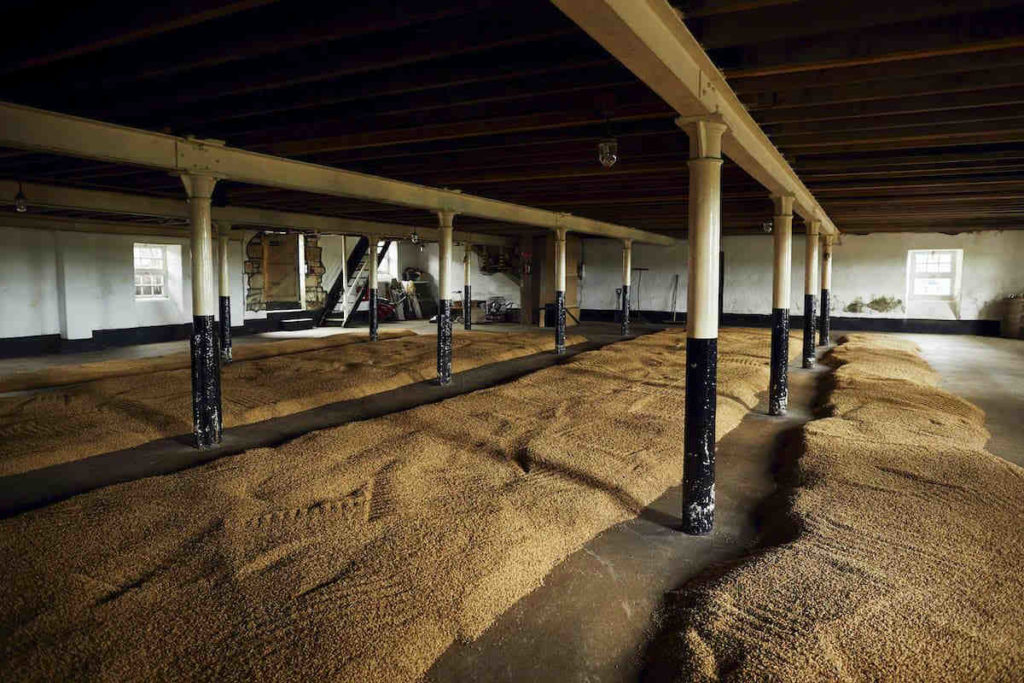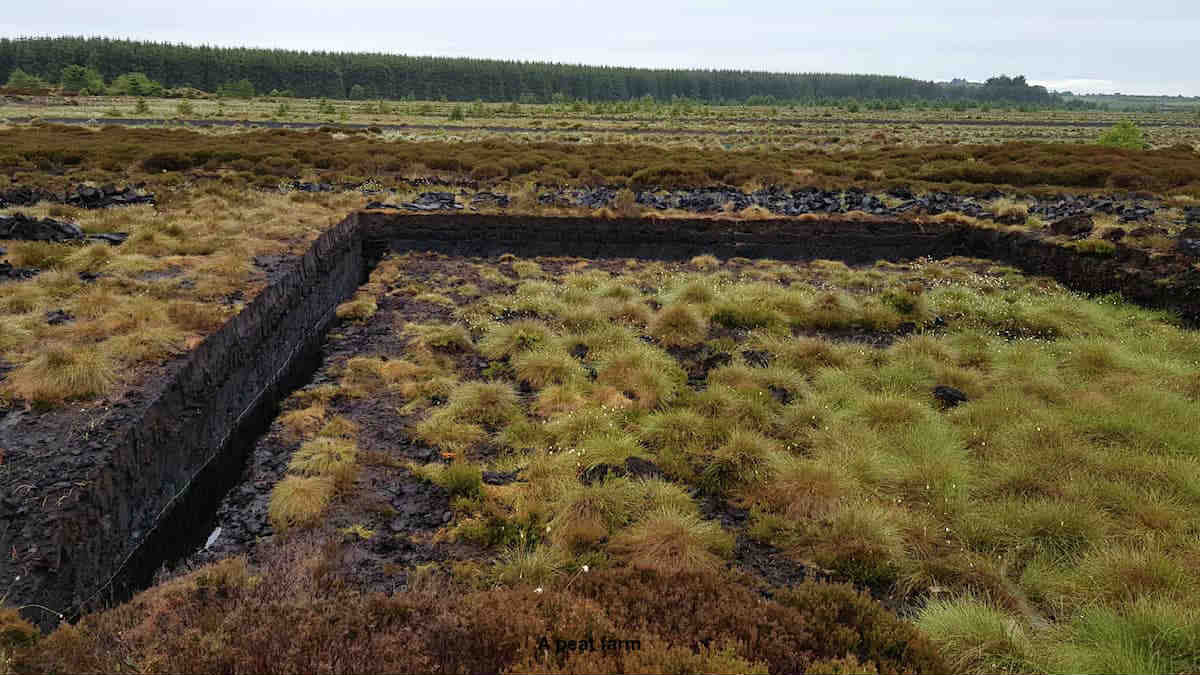Ask your average whisky drinker what makes some scotch smoky, and they’re likely to answer “peat.” Ask that same drinker to define peat, and you might hear “It’s, um, something from a bog.”
As I found myself in the latter camp, I felt it was time for a proper education on all matters peat. To facilitate that learning I reached out to BenRiach brand ambassador Rebecca Gardiner, who is uniquely qualified to speak on the subject. Aside from representing the 122-year-old distillery—which in 1972 became the first Speyside distillery to use peat—Gardiner is a native of Galway, Ireland, and grew up cutting peat (also known as “turf”) with a six foot-long sleán passed down from her great-grandfather.
“I grew up learning how to cut turf.” Gardiner says. “This was my summer. This was how I earned my pocket money.”
Peat 101
Peat is an accumulation of decayed vegetation that forms over the space of three to five thousand years in wetlands that are called “bogs” or “peat bogs.” Said more succinctly, it’s sort of like coal, but much softer, and can be used as fuel.
Peat bogs can range in depth from six to 16 feet. Traditionally, peat was extracted with a tool known as a sleán (Gallic for “to cut,”), which attached a long handle to a footlong blade. After the peat was cut from the wet earth, the substance would be left out for a month to dry.

Historically, scotch whisky was peated not by choice, but by necessity.
“At one time all scotch would be smoky, because [peat] was the only heat and fuel source. Wood was way too expensive to burn and peat was known as the ‘free fuel’ because you could harvest it yourself,” Gardiner says.
How Peat Works
Peating occurs after the barley used to make scotch has been soaked in water to kick-start germination. This is the process that turns barley to malt and occurs on what’s known as a “malting floor.”
To dry the new malt, peat is burned in furnaces under the malting floor. The resulting smoke hits the malt, and thus finds its way into the bottle.
The flavors and intensity of peat will vary depending on the bog’s environment. Gardiner points out that Irish peat, which is much lighter in coloration than Scottish peat, is also less dense and has a much milder effect on the malt, thanks to differences in soil.

The peat bogs of Scotland also vary. Highland peat, which BenRiach uses to make its peated expressions, is formed primarily from forest leaves and grass and has a higher density with less moisture retention. It’s a contrast to the peat found in Islay—the island scotch whisky region most readily associated with smoky flavors—which is wetter, less dense, and has a different pH balance owing to its contact with the ocean and sea debris.
To explain how the peat dug from these distinct regions will have a different effect when burned, Gardiner compares it to using logs in a fire.
“I always say that the peat we get from using a Highland peat is going to be a little more campfire, it’s going to be a little more subtle,” she says. “If you ever pick up a log that’s been wet and throw it on a fire, it smokes more. Obviously, there’s more water, there’s more damp in the Islay [peat], so you get more smoke. It’s a bigger flavor.”
Peat Past, Present, and Future
As Gardiner hinted at earlier, there was a time when smokiness defined every scotch, not just those from Islay. But the widespread use of peat declined when railways extended into Scotland, bringing extra fuel sources that could be burned in place of peat. But Islay, which sits off of Scotland’s west coast, couldn’t be connected by rail, so peat continued to reign supreme.
Today, a greater concern is the continued availability of what was once considered free fuel. Although peat bogs still account for around 20% of Scotland’s land mass, preservation laws now protect bogs sitting on public land. And that’s likely a good idea, as it requires a few millennia to make more of the stuff.

With an eye to the future, some scotch whisky stakeholders have investigated the possibility of importing peat from abroad. So far, testing has shown that Icelandic peat most closely resembles the peat in Islay. If and when non-domestic peat is ever used, it may create some sticky new questions for the Scotch Whisky Association. But fortunately we’re a long way from crossing that bridge.
In the meantime, distillers like BenRiach and others continue to burn peat, this time not by necessity, but choice.
“It doesn’t burn easily, so it’s a labor of love to use it. But when you do, you get these amazing, great flavors,” says Gardiner. “It’s definitely the last of a dying art.”



